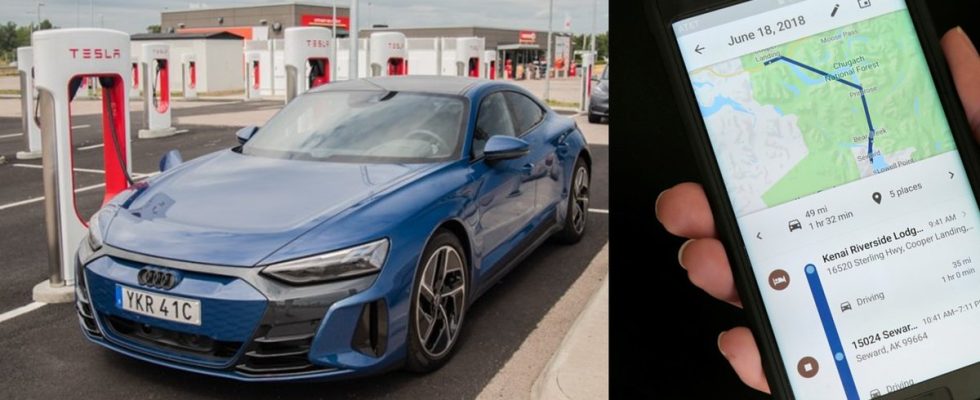Relying on the built-in route planning in modern electric cars is often the right thing to do if the goal is to arrive as quickly as possible, since the car will choose to stop at the points where it is most efficient to charge.
However, this does not always agree with when and where you want to stay and eat, or with the price you can imagine paying for charging. Unlike the price differences between different gas stations, which at most differ by a few percent from station to station, you can easily have to pay double the price at one electric car charger compared to another.
Luckily, there are some mobile apps that can help with this.
Overtaking will be prohibited here at Easter
Charge finder
My favorite app for quickly finding out which electric car chargers are available in my area is Chargefinder, which can be downloaded for both iPhone and Android phones.
The app collects all electric car chargers throughout Sweden. Through a map and an easy-to-use search function, you can easily find out which chargers are in a particular area.
Through the app, you also quickly get an overview of the chargers’ charging speed, type and price, as well as how many sockets there are, how many sockets are available and which company is the operator. It is also possible to filter by type of charger and charging speed. In a perfect world, it would also have been possible to filter by price.
I mainly use the app to check the charging options at my destination – for example, if I want to charge the car locally for a week in the mountains.
Electric car to the mountains this Easter? These tips make the trip smoother
A Better Route Planner
When it comes to planning the trip itself, however, A Better Route Planner, ABRP for short, is a better option, which is also available for IPhone and Android.
The app collects all chargers in the country, and is simply explained as a navigator that plans your entire trip including charging stops. In the app, you can specify which car you have, how charged the battery is at departure, as well as a number of factors that affect the range – for example, the value game.
Just like the built-in navigation in many cars, the app then plans a route, and shows when to stop and how long to charge at each place. If you want to stay longer at a stop, for example to eat, the app can plan for it.
If you pay for the premium version, you also get integration with Apple Carplay, as well as traffic updates.
However, you cannot see the prices at the various charging stations, but to find out you have to consult the Chargefinder app. The app also does not keep track of whether the car draws more than expected, and thus will not automatically adjust the charging stop accordingly.
The hassle of the charging companies is sabotaging the electric cars
Built-in navigation has its advantages
The fact that the car can draw more electricity than expected is a strong argument for using the car’s own navigation, even if it has certain limitations. In most cases, the car itself will realize that the charge will not be enough for the destination, and will suggest an extra charging stop.
Another strong argument for the built-in systems is that they can control the preheating of the battery, which in many cars can only be activated by setting a charger as a destination in the navigation system. A preheated battery is faster to charge, and is thus preferable for long drives.
In a perfect world, the built-in systems would have had greater opportunities for the driver to request the price, time and location of the charging stop. Alternatively, the apps would be empowered to talk directly to the cars.
As it is now, you simply have to combine the car’s system with the mobile apps to make the journey as smooth as possible.
Many regret their electric car: Here is the main reason
